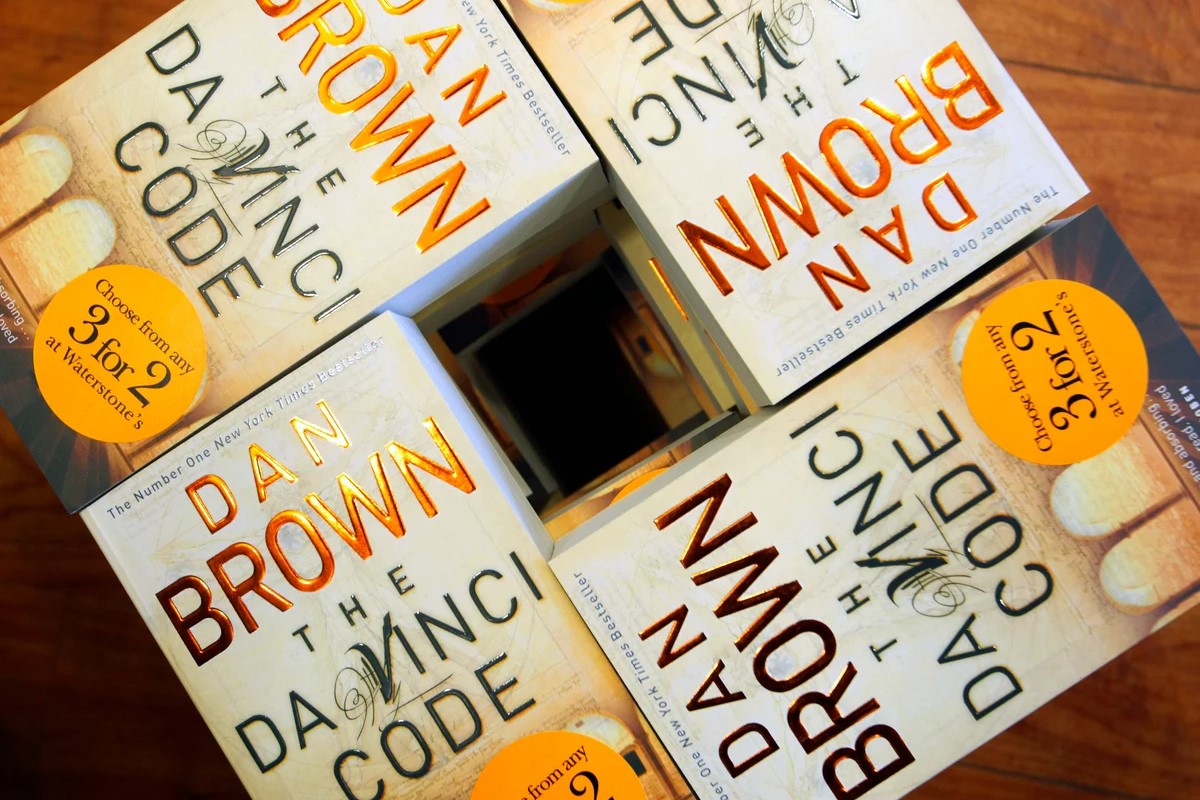
Ever wondered what makes "The Da Vinci Code" such a captivating read? This best-selling novel by Dan Brown has intrigued millions with its blend of history, art, and mystery. But did you know it’s packed with fascinating facts that go beyond its pages? From its controversial themes to the real-life locations it describes, there's so much more to uncover. Whether you're a fan of the book or just curious about its impact, these 25 facts will give you a deeper understanding of why "The Da Vinci Code" continues to capture imaginations worldwide. Ready to dive into the secrets behind this literary phenomenon? Let's get started!
Key Takeaways:
- "The Da Vinci Code" by Dan Brown has sold over 80 million copies, been translated into 44 languages, and sparked debates among religious groups and scholars worldwide.
- The book's impact extends beyond literature, influencing tourism, film, and academic interest, and even inspiring a franchise with sequels and related books.
The Da Vinci Code: A Global Phenomenon
Dan Brown's The Da Vinci Code has captivated readers worldwide since its release. This novel blends mystery, history, and religion into a thrilling narrative. Here are some fascinating facts about this best-selling book.
-
Published in 2003, The Da Vinci Code quickly became a global bestseller, selling over 80 million copies.
-
Translated into 44 languages, making it accessible to readers all around the world.
-
Inspired by real locations, the story takes readers through famous landmarks like the Louvre Museum and Westminster Abbey.
-
Controversial themes sparked debates among religious groups, historians, and scholars.
-
The protagonist, Robert Langdon, is a Harvard symbologist who also appears in other Dan Brown novels.
The Plot and Characters
The intricate plot and well-developed characters are key elements that make The Da Vinci Code so engaging. Let's delve into some intriguing details about them.
-
Sophie Neveu, a French cryptologist, assists Langdon in solving the mystery.
-
The Priory of Sion, a secret society in the book, is based on a real-life organization, though its historical accuracy is debated.
-
The Holy Grail, central to the plot, is depicted as a symbol rather than a physical object.
-
The Fibonacci sequence plays a crucial role in the story's puzzles and codes.
-
Sir Leigh Teabing, a British historian, is named after two of Brown's real-life friends.
Historical and Artistic References
The Da Vinci Code is rich with references to historical events and works of art. These elements add depth and intrigue to the narrative.
-
Leonardo da Vinci's works, especially The Last Supper, are pivotal to the story's mystery.
-
The Vitruvian Man, another famous da Vinci drawing, is referenced in the book.
-
The Knights Templar, an ancient order of knights, are integral to the plot.
-
The Council of Nicaea, a historical event, is discussed in relation to the formation of the Bible.
-
The Louvre Pyramid, a modern architectural marvel, is featured prominently in the story.
The Impact and Legacy
The Da Vinci Code has left a lasting impact on literature, popular culture, and even tourism. Here are some ways it has influenced the world.
-
Boosted tourism to locations mentioned in the book, such as the Louvre and Rosslyn Chapel.
-
Adapted into a film in 2006, starring Tom Hanks as Robert Langdon.
-
Inspired numerous books, both fiction and non-fiction, exploring similar themes.
-
Sparked academic interest, leading to courses and lectures on the book's themes and historical references.
-
Created a franchise, with sequels like Angels & Demons and Inferno continuing Langdon's adventures.
Fun and Lesser-Known Facts
Beyond the well-known aspects, there are some fun and lesser-known facts about The Da Vinci Code that add to its allure.
-
Dan Brown's wife, Blythe, is a historian and painter who helped with the research for the book.
-
The book's original title was supposed to be The Solomon Key, but it was changed before publication.
-
The Da Vinci Code has been banned in some countries due to its controversial themes.
-
A special illustrated edition of the book was released, featuring images of the art and locations mentioned in the story.
-
Dan Brown's writing routine includes listening to classical music and hanging upside down to get creative ideas.
Final Thoughts on The Da Vinci Code
The Da Vinci Code has captivated readers worldwide with its blend of mystery, history, and art. Dan Brown's novel sparked debates, inspired countless discussions, and even led to a successful film adaptation. Its intricate plot, filled with historical references and symbolism, keeps readers on the edge of their seats. Whether you're a fan of thrillers or just curious about the secrets of history, this book offers something for everyone. From the enigmatic Mona Lisa to the hidden messages in famous artworks, The Da Vinci Code encourages readers to look beyond the surface. It’s more than just a story; it’s an invitation to explore the mysteries of the past. So, if you haven't read it yet, grab a copy and dive into the world of Robert Langdon. You won't be disappointed.
Frequently Asked Questions
Was this page helpful?
Our commitment to delivering trustworthy and engaging content is at the heart of what we do. Each fact on our site is contributed by real users like you, bringing a wealth of diverse insights and information. To ensure the highest standards of accuracy and reliability, our dedicated editors meticulously review each submission. This process guarantees that the facts we share are not only fascinating but also credible. Trust in our commitment to quality and authenticity as you explore and learn with us.
